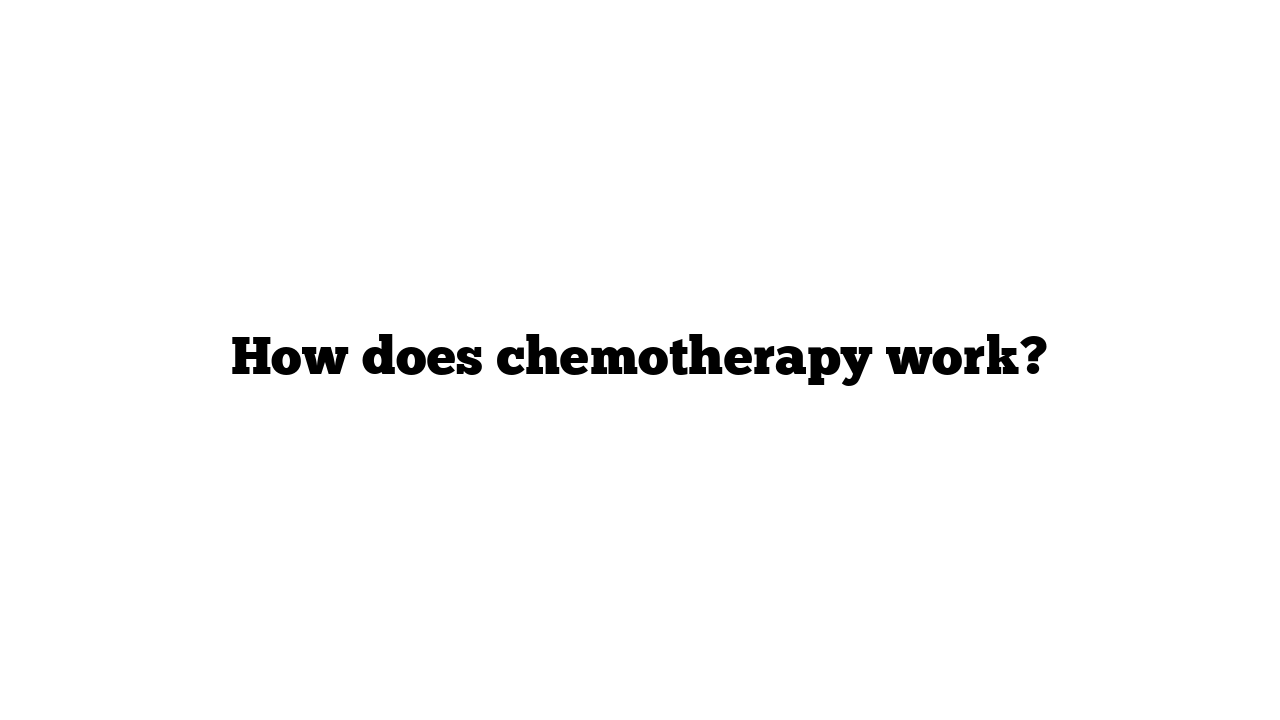Chemotherapy is a type of cancer treatment that uses powerful medications to kill or slow the growth of cancer cells. Here’s a breakdown of how chemotherapy works, its purposes, and what to expect during treatment.
What is Chemotherapy?
Chemotherapy refers to a group of medications that are used to treat cancer. It can be used alone or in combination with other treatments such as surgery or radiation therapy. The primary goal is to target rapidly dividing cancer cells, but chemotherapy can also affect other fast-growing healthy cells in the body.
How Does Chemotherapy Work?
- Targeting Cancer Cells:
- Chemotherapy drugs work by interfering with the cancer cells’ ability to grow and divide. Different types of chemotherapy drugs attack cancer cells in various ways:
- Alkylating Agents: These drugs damage the DNA of cancer cells, preventing them from dividing. Examples include cyclophosphamide and ifosfamide.
- Antimetabolites: These mimic natural substances in the cell, disrupting the cell’s metabolism and preventing cell division. Examples are methotrexate and 5-fluorouracil.
- Anti-tumor Antibiotics: These disrupt the DNA inside cancer cells, inhibiting their growth. Examples include doxorubicin and bleomycin.
- Topoisomerase Inhibitors: These interfere with the enzymes that help separate DNA strands, which is necessary for cell division. Examples include irinotecan and etoposide.
- Chemotherapy drugs work by interfering with the cancer cells’ ability to grow and divide. Different types of chemotherapy drugs attack cancer cells in various ways:
- Disrupting Cell Division:
- Cancer cells typically grow and divide more quickly than normal cells. Chemotherapy targets these rapidly dividing cells, preventing them from multiplying.
- Combination Therapy:
- Often, multiple chemotherapy drugs are used together (a combination therapy) to increase effectiveness. This can help prevent the cancer from developing resistance to a single drug.
Administration of Chemotherapy
Chemotherapy can be administered in several ways, depending on the type of cancer and treatment plan:
- Intravenously (IV): The most common method, where drugs are injected into a vein.
- Orally: Some chemotherapy drugs come in pill form and can be taken by mouth.
- Injection: Drugs can also be injected into a muscle or under the skin.
- Intrathecally: In some cases, chemotherapy may be delivered directly into the cerebrospinal fluid.
Duration and Schedule of Treatment
- Treatment plans vary widely based on the type of cancer, stage of the disease, and the specific drugs used. Chemotherapy is often given in cycles, with periods of treatment followed by rest periods to allow the body to recover.
Side Effects of Chemotherapy
While chemotherapy is effective in treating cancer, it can also cause side effects because it can affect healthy cells in the body. Common side effects include:
- Nausea and Vomiting: Many chemotherapy drugs can cause these symptoms, though anti-nausea medications can help manage them.
- Fatigue: A common side effect due to the impact on healthy cells and the body’s energy levels.
- Hair Loss: Chemotherapy can affect hair follicles, leading to hair thinning or loss.
- Increased Risk of Infection: Chemotherapy can lower white blood cell counts, making the body more vulnerable to infections.
- Changes in Appetite: Patients may experience increased or decreased appetite.
Conclusion
Chemotherapy is a crucial component of cancer treatment that aims to kill cancer cells or inhibit their growth. While effective, it can also lead to significant side effects. Understanding how chemotherapy works can help patients and their families prepare for treatment and manage expectations. Always consult with healthcare providers for personalized information and support throughout the treatment process.
